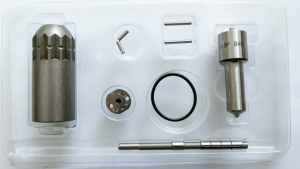Abstract
Sealing surface wear of the injector nozzle is a critical factor that gradually deteriorates fuel injection accuracy during long-term engine operation. This study investigates the mechanisms, evolution patterns, and quantitative influence of sealing surface wear on key injection parameters such as injection rate, start of injection (SOI), end of injection (EOI), and leakage mass. A combined methodology—incorporating surface morphology characterization, clearance growth modeling, and injection bench testing—is adopted to reveal the drift规律 of injection precision.
Wear of the needle–seat sealing interface primarily originates from repeated high-pressure impacts, micro-abrasive particles in fuel, cavitation erosion, and alternating thermal loads. As the conical sealing surface loses material, the effective seating line gradually widens and the radial clearance increases, leading to changes in the hydraulic force balance on the needle. This causes a reduction in the opening pressure and a shift in needle lift dynamics. Experimental results show that even a 2–5 μm increase in sealing wear depth can cause noticeable drifts in SOI, earlier needle opening, and elongated injection duration.
A progressive injection drift model is established based on fluid–structure coupling, linking wear-induced gap growth to internal leakage, pressure decay rate, and needle motion delay. The model indicates that sealing wear increases back-leakage flow exponentially, resulting in unstable pressure buildup in subsequent cycles. Consequently, injection quantity under small pulse-width commands shows the most significant deviation, with low-load injection exhibiting up to 12–18% drift after severe wear.
High-speed visualization of injection spray reveals that sealing wear accelerates micro-jet formation and deteriorates spray symmetry. This is attributed to uneven pressure recovery and localized flow concentration due to the deformed seat geometry. Additionally, increased leakage lowers the effective injection pressure, worsening atomization quality and expanding droplet size distribution.
The study concludes that sealing-surface wear displays a nonlinear impact pattern on injection accuracy: the early stage shows mild drift, followed by a rapid deterioration phase once the wear depth exceeds a critical threshold. Preventive strategies such as optimized seat surface micro-textures, DLC coating, improved fuel filtration, and adaptive injection compensation algorithms are recommended to mitigate the accuracy degradation.





















